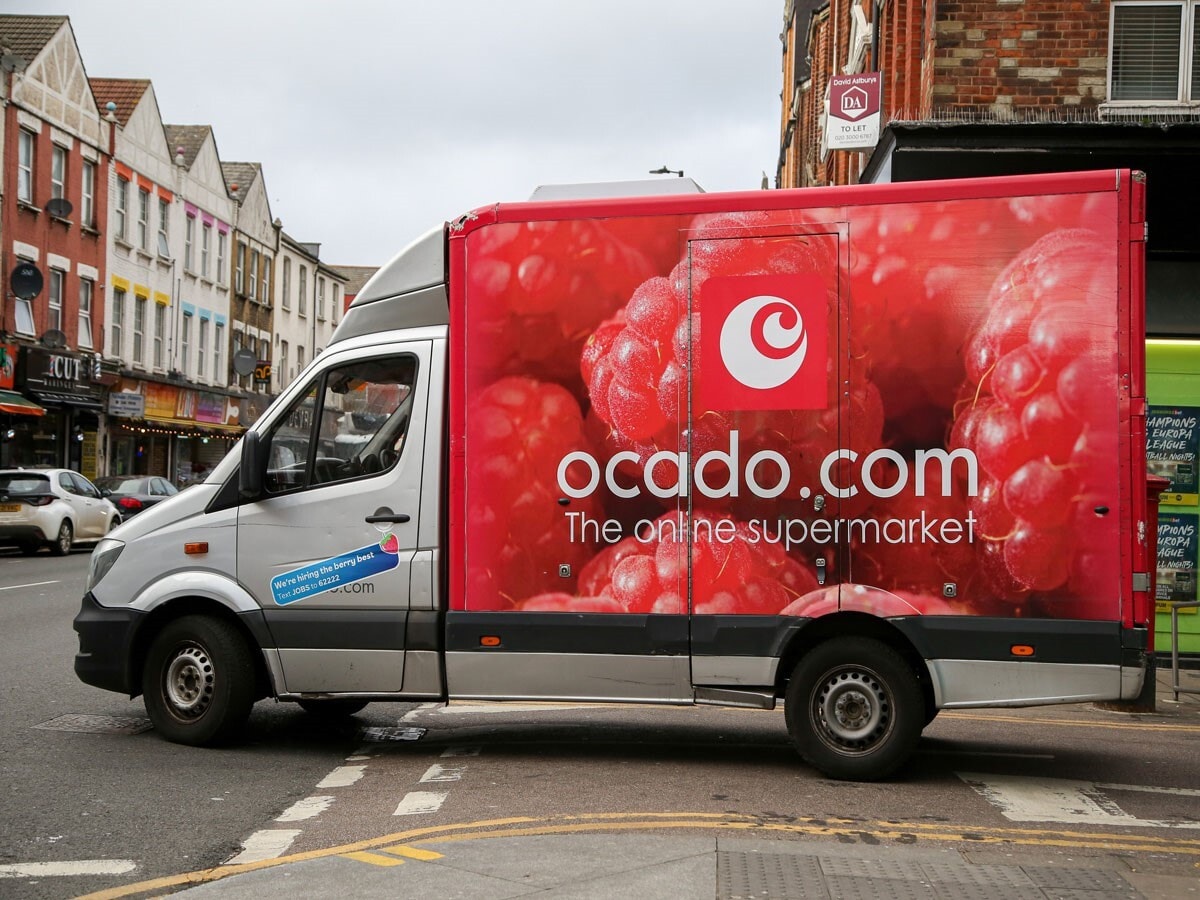Ocado’s share price soared during the pandemic. However, post-Covid, the stock has slumped. Not only is the company’s business of building state-of-the art fulfilment centres posting huge losses, but its retail business has started to sag. Annual results for 2022 were a reminder that the online grocer has plenty of work to do if it’s to convince investors of its long-term vision.
Ocado’s [OCDO] share price saw triple-digit gains during the height of the pandemic: between 24 February 2020 and 27 January 2021 it rose by 153%, outpacing rival grocer Sainsbury’s [SBRY.L] 17% gain over the same timeframe, not to mention the FTSE 100’s 9.65% loss.
Powering this surge were investors betting that the shift to online grocery shopping was here to stay. Another big bet from investors was that Ocado’s business building state-of-the-art warehouse facilities, known as customer fulfilment centres, for international clients would eventually pay off.
However, since closing at 2883p on 28 February 2021, Ocado shares have dropped a substantial 75% in value, closing Friday 3 March at 550.2p. Not only has Ocado given up its pandemic-era gains, it is now trading at levels last seen in May 2018.
Ocado’s share price slumps on £500m pre-tax loss
Ocado’s annual results for 2022 made for glum reading. Pre-tax losses were £500.8m last year, up from £176.9m in 2021. Sales in its joint venture retail business with Marks and Spencer [MKS] dropped 2.8% to £2.2bn in 2022. Retail losses came in at £4m, reversing a £150.4m profit in 2021, as customers tightened their belts.
Ocado’s international solutions business, which builds fulfilment centres for clients, continued to be a major drag on performance. In 2022 this side of the business racked up a pre-tax loss of £113.2m. While that’s down £6.1m from a £119.3m loss the previous year, it still represents a significant hit.
Ocado said it had a strong pipeline in this area, along with more orders from existing clients. Yet the scale of the losses, coupled with the losses from its retail business, subsumed the £67.2m pre-tax profit made by its UK solutions and logistics business.
Since publication of the results on 28 February, Ocado’s share price has fallen over 11%.
Can Ocado’s stock recover?
Chair Rick Haythornthwaite remarked that it had been “far from an easy year” for Ocado in his letter accompanying the 2022 results. Haythornthwaite said Ocado would “become cash flow positive within the next four to six years”.
How patient investors will be with continuing losses is the big question. A decline in retail sales, which has previously acted as a counterbalance to investment in its international business, makes it more difficult for the company to become profitable. Should the decline prove to be long-term, then the challenge will only get harder.
Ocado’s retail wing reported a 13% rise in active customers to 940,000 in 2022, with the average number of orders received rising 5.6% to 377,000. But the average customer shop fell by 8.5% to £118. Ocado said that the average number of items per order dropped from 52 to 46. To boost sales it has promised to price-match 10,000 Tesco [TSCO] products as of 1 March. This could help increase business from customers who see Ocado as expensive compared to Tesco, Morrison’s [MRW] and discounters like Lidl.
Analyst downgrades also paint a gloomy picture for Ocado shares. In January, RBC downgraded the stock from ‘sector perform’ to ‘underperform’, slashing its price target from 800p to 560p. In November, JP Morgan Cazenove lowered its rating from ‘neutral’ to ‘underweight’, saying the pipeline roll-out of customer fulfilment centres would remain slow.
Should Ocado’s international solutions business prove to be scalable and become profitable, then the stock could once again rally. Yet investors are unlikely to forgive more heavy losses. The decline in retail is a troubling development.
Of the 13 analysts polled by the Financial Times, Ocado’s stock has a median 12-month price target. Hitting this would be a 34.5% gain on Friday’s close.
Continue reading for FREE
- Includes free newsletter updates, unsubscribe anytime. Privacy policy





